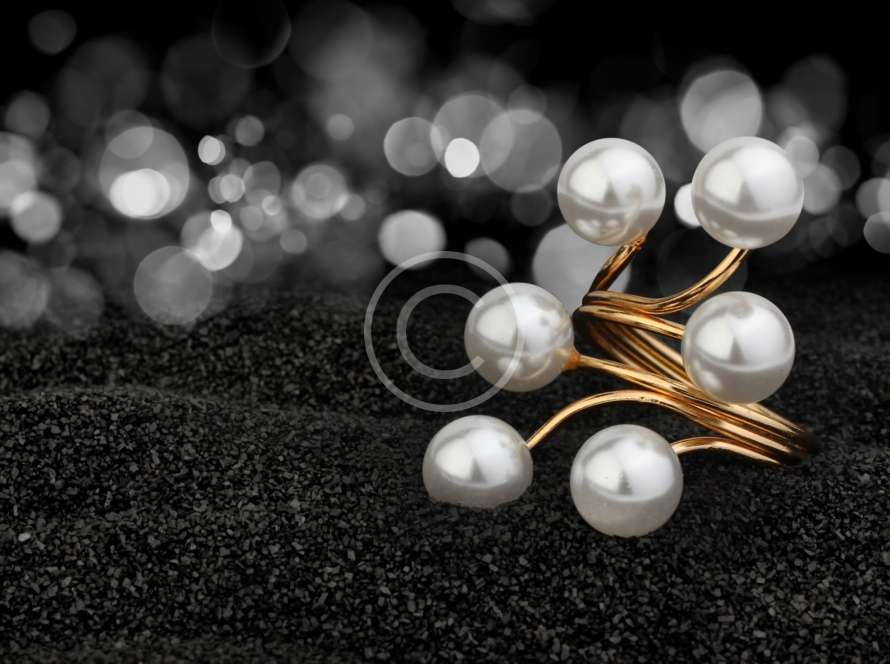Psychologists Explain People's Desire to Wear Jewelry: Understanding the Fascination with Adornment
Jewelry has been an integral part of human culture for thousands of years, serving as a means of self-expression, social communication, and personal adornment. From intricate necklaces in ancient civilizations to sleek, minimalist rings in modern times, jewelry captivates us for reasons that go beyond aesthetics. Psychologists offer fascinating insights into why people feel drawn to wear jewelry, uncovering the deeper psychological, emotional, and social factors that drive this universal desire.
Here’s a closer look at the psychology behind our love for jewelry and what it reveals about human behavior.
1. Jewelry as a Form of Self-Expression
Psychological Insight:
Jewelry allows individuals to communicate their personality, values, and identity without speaking. Wearing specific types of jewelry can serve as a visual cue that reflects one’s unique style, interests, or cultural background.
Why It Matters:
- Personal Identity: Jewelry helps people establish and express their identity, making them feel more authentic.
- Mood Reflection: The choice of jewelry can vary depending on a person’s mood or the occasion, allowing for dynamic self-expression.
Example: Someone wearing a bold, colorful statement necklace might want to project confidence and energy, while a person wearing simple, delicate jewelry may aim for an understated, elegant look.
2. The Desire for Social Recognition and Status
Psychological Insight:
Jewelry has historically been associated with wealth, power, and social status. People wear fine jewelry, such as diamond rings or gold necklaces, as a way to signal their success and place within society.
Why It Matters:
- Symbol of Achievement: Owning and wearing expensive jewelry is often seen as a reward for hard work or success.
- Social Comparison: Jewelry can serve as a means of distinguishing oneself from others, reflecting a desire for validation and social recognition.
Example: Luxury brands like Cartier or Tiffany & Co. cater to this need by offering exclusive designs that signal prestige and exclusivity.
3. Emotional Attachment and Sentimental Value
Psychological Insight:
Jewelry often holds deep emotional significance, serving as a tangible reminder of special moments, relationships, or loved ones. People may wear heirlooms or gifts to feel connected to their past or to those they cherish.
Why It Matters:
- Symbol of Love and Commitment: Rings, especially wedding and engagement rings, symbolize enduring love and emotional bonds.
- Memorial and Nostalgia: Wearing a piece of jewelry inherited from a loved one can provide comfort and a sense of connection to family history.
Example: A woman might wear her grandmother’s pearl earrings not only for their beauty but also for the cherished memories they evoke.
4. The Role of Jewelry in Cultural and Religious Identity
Psychological Insight:
Jewelry plays a vital role in many cultural and religious traditions, symbolizing faith, heritage, or rites of passage. Wearing culturally significant jewelry fosters a sense of belonging and reinforces identity.
Why It Matters:
- Cultural Pride: Adorning oneself with jewelry rooted in cultural traditions can strengthen one’s connection to their heritage.
- Spiritual Significance: In many religions, jewelry like crosses, rosaries, or amulets serves as a symbol of devotion or protection.
Example: A Hindu bride wearing ornate gold jewelry during her wedding not only honors tradition but also symbolizes prosperity and spiritual blessings.
5. Jewelry as a Confidence Booster
Psychological Insight:
Wearing jewelry can enhance self-esteem and confidence, much like wearing a well-fitted suit or a flattering dress. The act of adorning oneself with beautiful pieces can make individuals feel more attractive, powerful, and poised.
Why It Matters:
- Perception of Beauty: Jewelry draws attention to key features, such as the face, neck, or hands, enhancing overall appearance.
- Empowerment: Many people use jewelry as a form of self-care, treating themselves to something that makes them feel special and worthy.
Example: A professional wearing a sleek gold watch during a business meeting may feel more confident, projecting an image of competence and authority.
6. The Psychological Comfort of Rituals
Psychological Insight:
The act of putting on jewelry can be a comforting ritual, helping individuals feel prepared for the day or a specific event. These rituals can provide a sense of structure and control in one’s life.
Why It Matters:
- Daily Routines: Wearing the same piece of jewelry daily, like a favorite necklace or bracelet, becomes a familiar and grounding habit.
- Symbol of Readiness: Jewelry can signify readiness for a particular role or occasion, such as dressing up for a date or an important presentation.
Example: A person may feel incomplete without their signature ring or lucky charm bracelet, as these items become part of their daily routine and self-image.
7. The Power of Symbolism in Relationships
Psychological Insight:
Jewelry often serves as a physical manifestation of important relationships, whether it’s a romantic partnership, friendship, or family bond. These pieces become symbols of connection, loyalty, and love.
Why It Matters:
- Romantic Symbols: Engagement and wedding rings are iconic symbols of lifelong commitment and devotion.
- Tokens of Friendship: Matching bracelets or necklaces are popular among friends as a way to symbolize their bond.
Example: A couple exchanging matching rings on their anniversary reinforces their commitment and shared memories.
8. Jewelry as a Form of Artistic Appreciation
Psychological Insight:
For many, jewelry is not just an accessory but a piece of wearable art. The craftsmanship, design, and intricate details of fine jewelry can captivate the imagination and inspire admiration.
Why It Matters:
- Appreciation of Beauty: Wearing a beautifully designed piece of jewelry allows individuals to carry art with them.
- Expression of Taste: Jewelry showcases one’s appreciation for fine details and aesthetics, reflecting personal taste and sophistication.
Example: Someone wearing a handcrafted emerald ring might feel a deep connection to its intricate design and the artisan’s skill.
9. Jewelry and the Psychology of Rewards
Psychological Insight:
Jewelry is often purchased as a reward for milestones, such as a promotion, graduation, or personal achievement. This ties the jewelry to positive reinforcement, making it more meaningful and cherished.
Why It Matters:
- Celebrating Success: Jewelry becomes a lasting symbol of personal growth and accomplishment.
- Motivation: Setting a goal to reward oneself with a special piece of jewelry can boost motivation and drive.
Example: A woman buying herself a diamond bracelet to celebrate her career success feels both pride and empowerment every time she wears it.
Conclusion
The desire to wear jewelry stems from a complex interplay of psychological, emotional, and cultural factors. Whether it’s for self-expression, social recognition, or sentimental reasons, jewelry holds deep meaning and significance for individuals. Understanding the psychology behind this desire not only enhances our appreciation of jewelry but also helps us choose pieces that resonate with our personal values and aspirations.
Key Takeaways:
- Jewelry serves as a powerful form of self-expression, allowing individuals to reflect their identity and mood.
- It holds social and emotional significance, symbolizing status, love, and cherished memories.
- Cultural and religious traditions reinforce the role of jewelry in fostering connection and identity.
- The act of wearing jewelry boosts confidence, celebrates achievements, and brings comfort through daily rituals.
Jewelry is much more than adornment—it’s a profound reflection of who we are and what we value.


